Results
5 results found

A narrow street lined with old buildings leading towards the Hokan-ji Gojunoto pagoda peeking out in the distance against the sunrise sky, Kyoto, Honshu, Japan, Asia

Paseo El Prado, Malecon, leading out of the city centre, Cienfuegos City, Cuba, West Indies, Caribbean, Cental America

Woman looking out to sea from path leading to beach with wooden fence, South Beach, Miami, Florida, United States of America, North America

Stairs leading to the Balcon del Mediterraneo, balcony of the Mediterranean, hexagonal outdoor terrace, Benidorm, Costa Blanca, Spain, Europe

Tourist enjoying a summer hike on a scenic trail leading to the majestic tre cime di lavaredo peaks in the dolomites, Italy

A path of stones leads through a narrow waterway next to a wall, Landsweiler-Reden water garden, Saarland, Germany
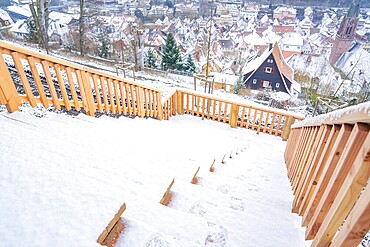
Snow-covered steps lead down to a picturesque village view in winter, New wooden footbridge in Calw town garden, Calw, Black Forest, Germany, Europe

Mountain guide guiding a young woman on a short rope through a rock face, Wiederroute, Watzmann, Schonau am Konigsee, Berchtesgadener Land, Bavaria, Germany, Europe

The Tizi-n-Test mountain pass cuts right through the High Atlas mountains being the most direct route from Marrakesh to Taroudant, a berber village in the valley, Morocco, Africa

Road leading to the Khardung La or Khardung Pass, the highest drivable pass in the world, Ladakh, Indian Himalayas, Jammu and Kashmir, northern India, India, Asia

Gravel road leading to a gate of cypress trees in wide Tuscanian landscape, late afternoon, Orcia Valley, Tuscany, Italy, Europe

Wooden track for wheelchair access on Bettmerhorn Mountain, 2872 metres high, leading to the observation deck above the Aletsch Glacier, Canton of Valais, Switzerland, Europe
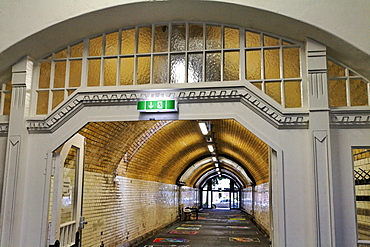
Disused Suedbahnhof railway station, built in 1908, exit leading through a tunnel, restored, Krefeld, North Rhine-Westphalia, Germany, Europe

Research assistants and technicians from the University of Ghana collect dust samples from the living rooms and bedrooms of children in Accra, Ghana. The samples will be analyzed for the presence of dust mites, fungus', and animal allergens to help researchers better understand why children in wealthier homes have higher rates of allergies and asthma than poorer children. The leading theory is that higher rates of helminth (parasite) infections among poorer children are affecting the immune system in a way that offers protection from allergies and asthma. The study aims to find out what the worms are doing, isolate the beneficial effect and replicate it.
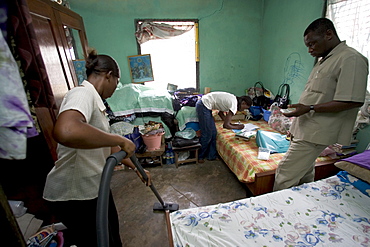
Research assistants and technicians from the University of Ghana collect dust samples from the living rooms and bedrooms of children in Accra, Ghana. The samples will be analyzed for the presence of dust mites, fungus', and animal allergens to help researchers better understand why children in wealthier homes have higher rates of allergies and asthma than poorer children. The leading theory is that higher rates of helminth (parasite) infections among poorer children are affecting the immune system in a way that offers protection from allergies and asthma. The study aims to find out what the worms are doing, isolate the beneficial effect and replicate it.
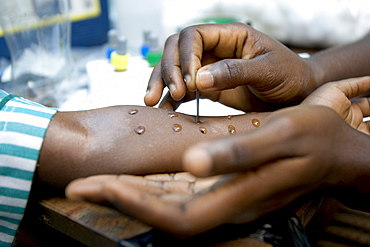
Research assistants and technicians from the University of Ghana perform basic skin prick tests on school children in Accra, Ghana to test for sensitivities to dog, cat, dust mites, grass pollen, peanuts, and cockroach allergens. The results have shown that children in wealthier homes have higher rates of allergies and asthma than poorer children. The leading theory is that higher rates of helminth (parasite) infections among poorer children are affecting the immune system in a way that offers protection from allergies and asthma. The study aims to find out what the worms are doing, isolate the beneficial effect and replicate it.
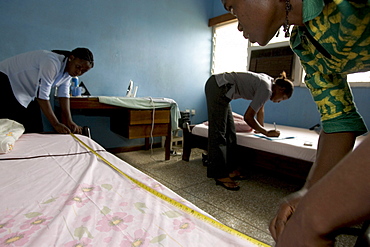
Research assistants and technicians from the University of Ghana collect dust samples from the living rooms and bedrooms of children in Accra, Ghana. The samples will be analyzed for the presence of dust mites, fungus', and animal allergens to help researchers better understand why children in wealthier homes have higher rates of allergies and asthma than poorer children. The leading theory is that higher rates of helminth (parasite) infections among poorer children are affecting the immune system in a way that offers protection from allergies and asthma. The study aims to find out what the worms are doing, isolate the beneficial effect and replicate it.
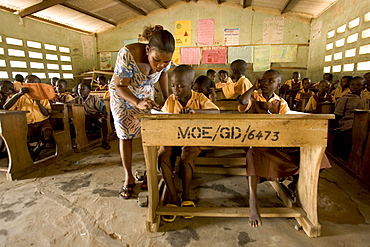
Research assistants and technicians from the University of Ghana perform basic skin prick tests on school children in Accra, Ghana to test for sensitivities to dog, cat, dust mites, grass pollen, peanuts, and cockroach allergens. The results have shown that children in wealthier homes have higher rates of allergies and asthma than poorer children. The leading theory is that higher rates of helminth (parasite) infections among poorer children are affecting the immune system in a way that offers protection from allergies and asthma. The study aims to find out what the worms are doing, isolate the beneficial effect and replicate it.

A flamingo stands on a structure leading out to the water with a glowing sun over the horizon, composite image
























